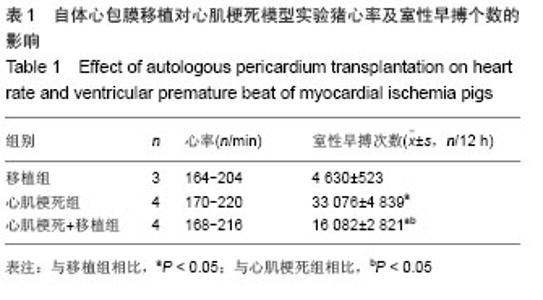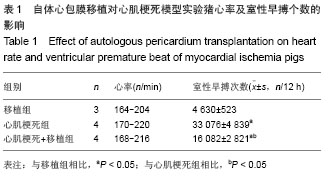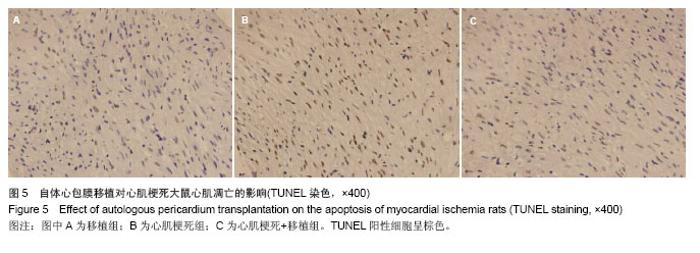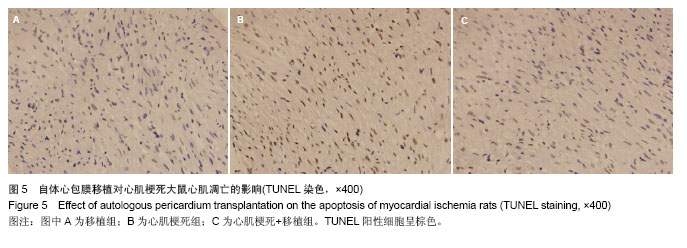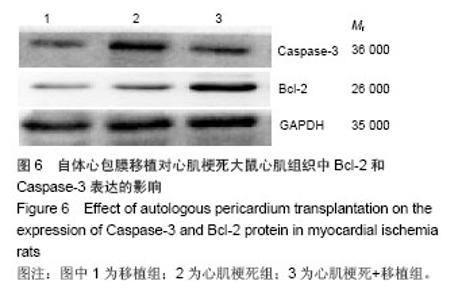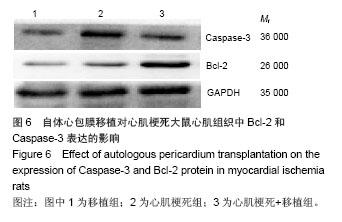| [1] |
Zhang Yu, Tian Shaoqi, Zeng Guobo, Hu Chuan.
Risk factors for myocardial infarction following primary total joint arthroplasty
[J]. Chinese Journal of Tissue Engineering Research, 2021, 25(9): 1340-1345.
|
| [2] |
Nie Huijuan, Huang Zhichun.
The role of Hedgehog signaling pathway in transforming growth factor beta1-induced myofibroblast transdifferentiation
[J]. Chinese Journal of Tissue Engineering Research, 2021, 25(5): 754-760.
|
| [3] |
Lang Limin, He Sheng, Jiang Zengyu, Hu Yiyi, Zhang Zhixing, Liang Minqian.
Application progress of conductive composite materials in the field of tissue engineering treatment of myocardial infarction
[J]. Chinese Journal of Tissue Engineering Research, 2021, 25(22): 3584-3590.
|
| [4] |
Sun Weixing, Zhao Yongchao, Zhao Ranzun.
Mesenchymal stem cell transplantation in the treatment of myocardial infarction: problems, crux and new breakthrough
[J]. Chinese Journal of Tissue Engineering Research, 2021, 25(19): 3103-3109.
|
| [5] |
Chen Siyu, Li Yannan, Xie Liying, Liu Siqi, Fan Yurong, Fang Changxing, Zhang Xin, Quan Jiayu, Zuo Lin.
Thermosensitive chitosan-collagen composite hydrogel loaded with basic fibroblast growth factor retards ventricular remodeling after myocardial infarction in mice
[J]. Chinese Journal of Tissue Engineering Research, 2021, 25(16): 2472-2478.
|
| [6] |
Shang Qingqing, Zhou Jianye.
Combination of hyaluronic acid hydrogel and bone marrow mesenchymal stem cells promotes cardiac function after myocardial infarction in rats (II)
[J]. Chinese Journal of Tissue Engineering Research, 2020, 24(34): 5559-5563.
|
| [7] |
Cheng Xiang, Guo Huan, Liu Yanping, Wei Xiaohui, Lei Dan, Wu Tao, Huang Ting, Huang Ming, Rong Zuyuan, Ling You.
Immunogenicity of heterogeneous acellular biosurgical patch
[J]. Chinese Journal of Tissue Engineering Research, 2020, 24(34): 5564-5569.
|
| [8] |
Liu Fei, Zhang Guanxin, Liu Xiaohong, Wang Licheng, Xu Zhiyun.
Endothelialization of acellular scaffold from sterilized bovine pericardium
[J]. Chinese Journal of Tissue Engineering Research, 2020, 24(28): 4562-4566.
|
| [9] |
Chen Siyu, Zhang Tao, Yin Wenjuan, Cai Lei, Li Yannan, Xie Liying, Zuo Lin.
Changes of cardiac function in rats with myocardial
infarction after umbilical cord-derived mesenchymal stem cell transplantation:
a meta-analysis
[J]. Chinese Journal of Tissue Engineering Research, 2020, 24(13): 2126-2132.
|
| [10] |
He Jigang, Xie Qiaoli, Wang Zihao, Yan Dan, Zhang Hongbo.
Time-volume variation in miR-330-3p expression in GATA-4-overexpressing bone marrow-derived mesenchymal stem cell exosomes
[J]. Chinese Journal of Tissue Engineering Research, 2019, 23(29): 4617-4622.
|
| [11] |
Zhang Pin, Guo Ying, Gao Yajie, Wang Zhendong, Li Baiyi, Zhang Xiaomin, Niu Yuhu, Liu Zhizhen, Ma Lihui, Niu Bo, Guo Rui.
Exosomes derived from human umbilical cord mesenchymal stem cells promote myocardial repair after myocardial infarction under hypoxia
[J]. Chinese Journal of Tissue Engineering Research, 2019, 23(17): 2630-2636.
|
| [12] |
Zhao Liang, Qiu Xiaona, Li Xiafei.
Research progress of myocardial scaffolds in the treatment of myocardial infarction
[J]. Chinese Journal of Tissue Engineering Research, 2019, 23(14): 2279-2284.
|
| [13] |
Hu Ji-hong, Zhao Jing-miao, Wang Qiu-ping, Jia Jia, Lu Juan, Jin Hua, Hou Qian.
Effects of bone marrow mesenchymal stem cell transplantation on voltage-gated K+ channel proteins and cytokines in the infarcted myocardium of rats
[J]. Chinese Journal of Tissue Engineering Research, 2018, 22(9): 1389-1394.
|
| [14] |
Wang Yuan-fei, Li Ya-xiong, Zhang Ya-yong, Jiang Li-hong.
Human umbilical cord-derived mesenchymal stem cells in the treatment of myocardial infarction: existing problems, effects and prospects
[J]. Chinese Journal of Tissue Engineering Research, 2018, 22(9): 1470-1476.
|
| [15] |
Shang Qing-qing, Zhou Jian-ye, Li Kai, Sun Jia-kang, Meng Jian, Li Jun.
Combination of hyaluronic acid and bone marrow mesenchymal stem cells promotes cardiac function after myocardial infarction
[J]. Chinese Journal of Tissue Engineering Research, 2018, 22(5): 675-679.
|


